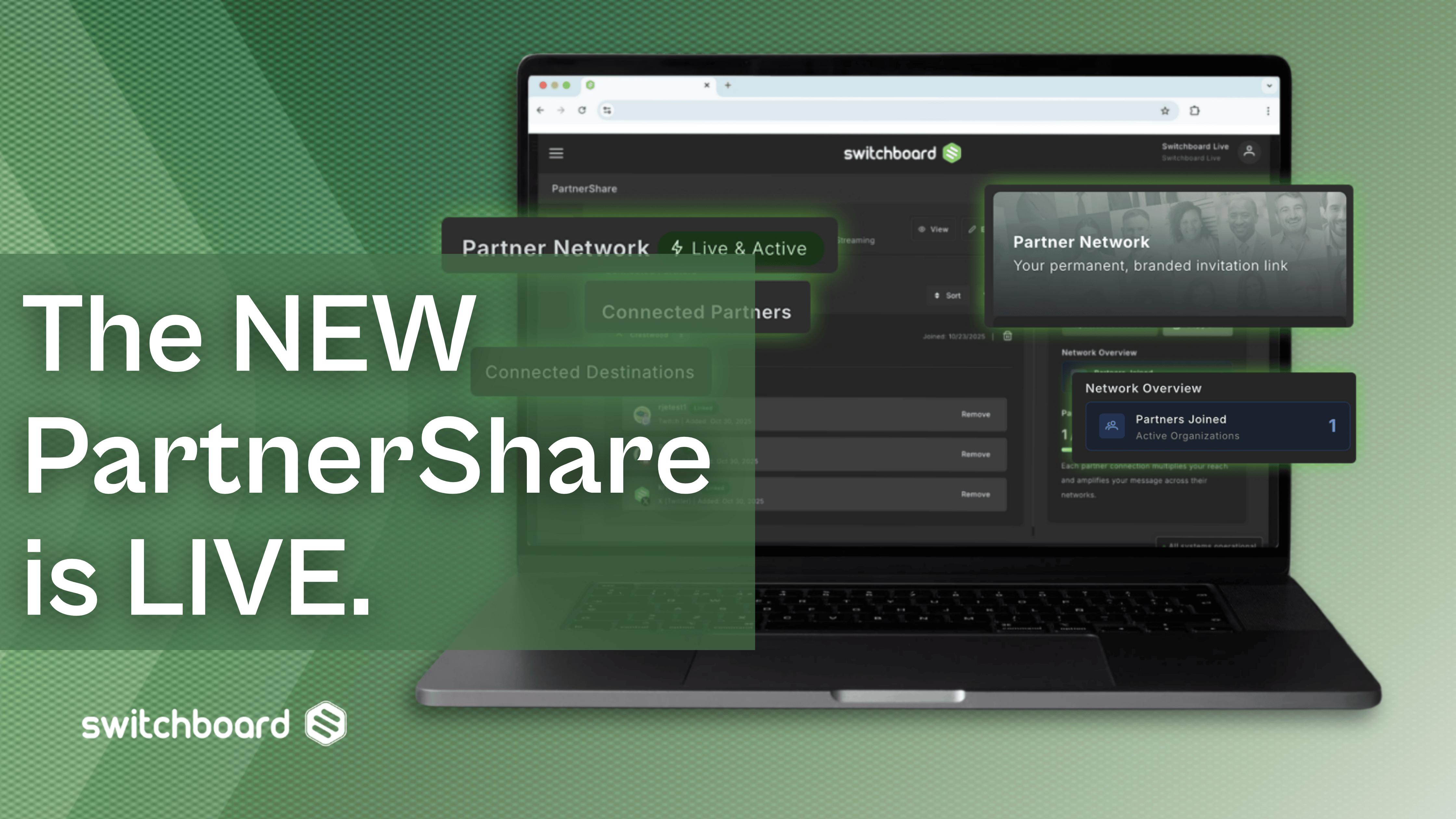When lives are on the line, first responders use technology to get important information out fast. When a child goes missing, an Amber Alert message is immediately sent to phones in the surrounding area with important information. If a major car accident closes a freeway, GPS devices can warn motorists to stay out of the area.
Is the next logical step to use a public service live stream to save lives? Can an internet video distribute important information to the public faster, and prevent even more tragedy?
The idea of such a live stream isn’t a new concept. Press conferences held after a major incident are often broadcast live to the world through social media, or alongside a local media partner. But can streaming to social media channels during an incident be even more effective?

Live Video Reaches More People
With the immediate availability of social media, broadcasting to the internet is not only effective but easier than ever before. More importantly, running a live stream can potentially reach more people than broadcasting to radio or television.
According to the United States Census Bureau, nearly 80 percent of Americans have internet access from their homes. In addition, the Pew Research Center estimates over 69 percent of Americans are active on at least one social media platform.
Not only does public service live streaming have the potential to reach people immediately, but social media statistics show digitally-connected audiences are actively seeking video content. In January 2018, Pew discovered YouTube was the most popular social network in America, with 73 percent of adults saying they used the network. And nearly all the respondents used the video sharing website at least once per week.
The current usage and prevalence of technology gives live streaming the potential to reach more people faster than traditional methods. While radio and television shouldn’t be abandoned in a crisis, live streaming and the power of the internet presents another option to get in front of the public.

Public Service Live Streams in Action
In an emergency, first responders’ primary focus is saving lives. Putting a live stream online for the public could be a very low priority. But when presented with a crisis, agencies are turning to the internet more often to make sure critical information gets to the masses.
In September 2017, FEMA coordinated their press conferences with local and regional media outlets to distribute safety information ahead of Hurricane Irma’s landfall. The agency took it a step further by creating a public service stream for Facebook Live, targeting residents living in the area. As a result of this multi-platform approach, FEMA was able to minimize the number of fatalities in the storm’s path.
Weather and natural disaster concerns are not the only events worthy of a first responder live stream. Toronto Police use public service live streams as a way to get information out about active homicide investigations, pilot programs, and important information during and after emergencies. When a driver attacked pedestrians on Toronto’s famous Yonge Street, police updated the public during and after the event using their YouTube channel, gathering thousands of views they may not have had without setting up such a live stream.

Managing a Public Service Live Stream
When facts matter, a public service live stream can make the difference between mitigating damage and complicating an emergency response even further. Digital streams can be used to educate the public about:
- Active shooter situations: If your agency is responding to an active shooter, streaming during and after the response can quickly inform the public about the situation, what areas to avoid, and how they can help first responders attend to those in need.
- Emergency preparation: When hurricanes and tornadoes are in the forecast, a live stream can immediately reach your audience with emergency preparation tips, evacuation routes, and ongoing updates on damage during and after the storm.
- Asking for the public’s help: During active investigations, public tips can make a big difference in bringing suspects forward. A well-timed public service live stream that asks for information can open leads and keep the streets safe.

Preparing a Live Streaming Plan
As with any discipline, training is critical to execution. Adding a live stream is simply an extension of any response plan. But before buying a camera and writing a public service message, it’s important to consider these emergency points:
- Delegate responsibilities to staff: In any emergency situation, knowing “who does what” reduces confusion and improves response time. Dedicating team members to the live stream can free up resources towards emergency response and mitigation.
- Determine the safest route: The last thing anyone wants to see are graphic details of a developing situation. Before turning the camera on, determine who makes the decision to start the stream, and where those should take place.
- Use the media as a partner: A public service live stream does not replace broadcasts from radio and television partners. However, the media can be used to remind the public of your live streams, and who to follow for more information after the fact.
- Follow up: After the live stream, it’s important to follow up with the public. This may include ongoing investigation information, road closures, or other information that will keep the public safe and secure.
Although it may sound like more work than its worth, adding a public service live stream to your plans can help your community in multiple ways. With a prepared plan, regular training, and a media partner to drive results, harnessing the power of the internet with a camera can save lives.





.png)
.png)
.png)





